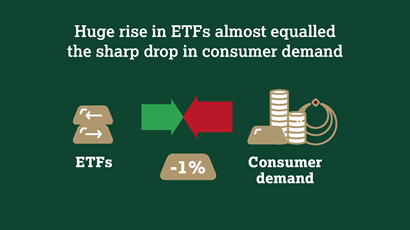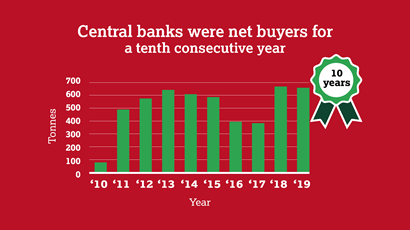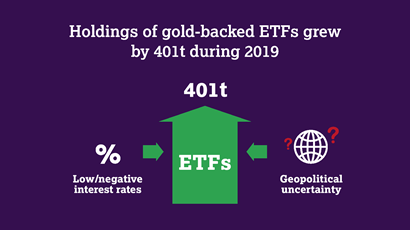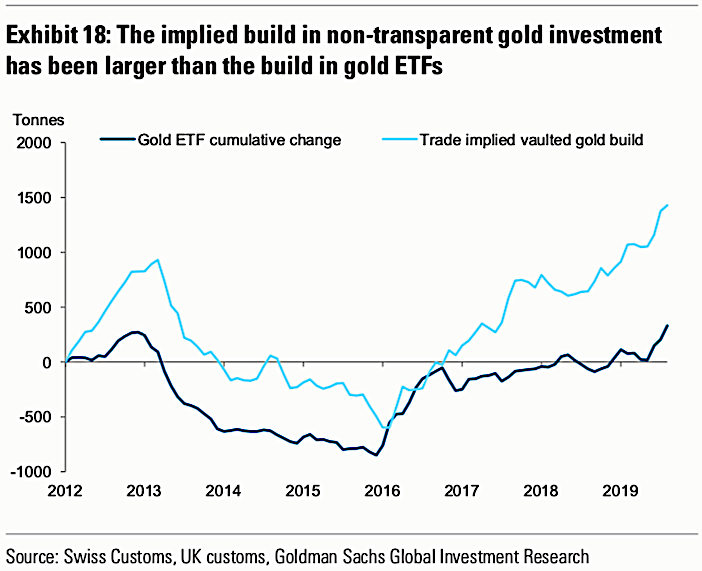Following are key dates in gold's trading history since the early 1970s:
* August 1971 - U.S. President Richard Nixon takes the dollar off the gold standard, which had been in place with minor modifications since the Bretton Woods Agreement of 1944 fixed the conversion rate for one Troy ounce of gold at $35.
* August 1972 - The United States devalues the dollar to $38 per ounce of gold.
* March 1973 - Most major countries adopt floating exchange rate system.
* May 1973 - U.S. devalues dollar to $42.22 per ounce.
* January 1980 - Gold hits record high at $850 per ounce. High inflation because of strong oil prices, Soviet intervention in Afghanistan and the impact of the Iranian revolution prompt investors to move into the metal.
* August 1999 - Gold falls to a low at $251.70 on worries about central banks reducing reserves of gold bullion and mining companies selling gold in forward markets to protect against falling prices.
* October 1999 - Gold reaches a two-year high at $338 after agreement to limit gold sales by 15 European central banks. Market sentiment toward gold begins to turn more positive.
* February 2003 - Gold reaches a 4-1/2 year high on safe-haven buying in the run-up to the invasion of Iraq.
* December 2003-January 2004 - Gold breaks above $400, reaching levels last traded in 1988. Investors increasingly buy gold as risk insurance for portfolios.
* November 2005 - Spot gold breaches $500 for the first time since December 1987, when spot hit $502.97.
* April 11, 2006 - Gold prices surpass $600, the highest point since December 1980, with funds and investors pouring money into commodities on a weak dollar, firm oil prices and geopolitical worries.
* May 12, 2006 - Gold prices peak at $730 an ounce with funds and investors pouring money into commodities on a weak dollar, firm oil prices and political tensions over Iran's nuclear ambitions.
* June 14, 2006 - Gold falls 26 percent to $543 from its 26-year peak after investors and speculators sell out of commodity positions.
* November 7, 2007 - Spot gold hits a 28-year high of $845.40 an ounce.
* January 2, 2008 - Spot gold breaks above $850.
* March 13, 2008 - Benchmark gold contract trades over $1,000 for the first time in U.S. futures market.
* March 17, 2008 - Spot gold hits an all-time high of $1,030.80 an ounce. U.S. gold futures touch record peak of $1,033.90.
* September 17, 2008 - Spot gold rises by nearly $90 an ounce, a record one-day gain, as investors seek safety amid turmoil on the equity markets.
* Jan-March 2009 - Gold-backed exchange-traded funds report record inflows in the first quarter as financial sector insecurity spurs safe-haven buying. Holdings of the largest, the SPDR Gold Trust, rise 45 percent to 1,127.44 tonnes.
* February 20, 2009 - Gold rises back above $1,000 an ounce to a peak of $1,005.40 as investors buy bullion as a safe store of value as major economies face recession and equity markets tumble.
* April 24, 2009 - China announces it has raised its gold reserves by three-quarters since 2003 and now holds 1,054 tonnes of the precious metal, boosting expectations it may add further to its reserves.
* August 7, 2009 - European central banks opt to renew their earlier agreement to limit gold sales over a five-year period, setting the sales cap at 400 tonnes a year.
* September 8, 2009 - Gold breaks back through $1,000 an ounce for the first time since February 2009 on dollar weakness and concerns over the sustainability of the economic recovery.
* December 1, 2009 - Gold climbs above $1,200 an ounce for the first time as the dollar drops.
* December 3, 2009 - Gold hits record high at $1,226.10 an ounce, with dollar weakness and expectations for central banks to diversify reserves into gold driving prices higher.
* May 11, 2010 - Gold reaches fresh record high above $1,230 an ounce as fears over the contagion of debt issues in the euro zone fuel safe-haven buying.
* June 21, 2010 - Gold jumps to a new high at $1,264.90 an ounce as underlying fears over financial market stability and sovereign risk combine with dollar weakness to push the metal through resistance at its previous high.
* Sept 14, 2010 - Gold climbs back to record highs, this time at $1,274.75, as global markets reflect renewed uncertainty on the economic outlook.
* Sept 16-22, 2010 - Gold hits record highs for five successive sessions, peaking at $1,296.10, as investors flock to bullion after the Fed signals it may consider further quantitative easing, weakening the dollar and raising fears over future inflation.
* Sept 27 - Spot gold prices touch the $1,300 an ounce mark for the first time.
* Oct 7 - Gold rallies to a record high above $1,360 an ounce as the dollar comes under pressure from building expectations for the U.S. Federal Reserve to take extra measures to keep interest rates low and prop up the economy.
* Oct 13 - Gold jumped to record highs near $1,375 an ounce as the dollar continued to languish, with the U.S. unit coming under pressure after minutes from the Fed's September meeting signaled the U.S. economy may need further stimulus.
* Nov 8 - Gold prices break through the $1,400 an ounce mark for the first time as haven buying prompted by renewed budget problems in Ireland more than offset a sharp dollar bounce.
* Dec 7 - Gold reaches a fresh record high above $1,425 an ounce, driven by fund buying ahead of year-end, jitters over the euro zone debt crisis and speculation for further U.S. monetary easing.
* January 2011 - Gold prices fall more than 6 percent in their worst monthly performance in over a year as a revival in risk appetite diverts investment to higher-yielding assets.
* March 1 - Gold recovers to hit a record high at $1,434.65 an ounce as unrest in Tunisia and Egypt spreads across the Middle East and North Africa, boosting oil prices.
* March 7 - Gold extends record highs to $1,444.40 an ounce as oil prices hit their highest in 2-1/2 years after protests are quashed in Saudi Arabia and as violence in Libya rages.
* March 24 - The resignation of Portuguese prime minister Jose Socrates pushes the euro zone debt crisis back to center stage, lifting gold prices to a record above $1,447 an ounce.
* April 7 - Gold prices extended their record highs toward $1,465 an ounce after the European Central Bank cast doubts over expectations for interest rate rises, while unrest in the Middle East encouraged safe-haven buying.
* July 18 - Gold hit a record of $1,598.41 an ounce, on track for an eleventh straight day of gains, on persistent worries about euro zone debt crisis spreading and a growing threat of a U.S. government default.
(Compiled by Atul Prakash, Jan Harvey, Amanda Cooper and Rujun Shen; Editing by Himani Sarkar)














